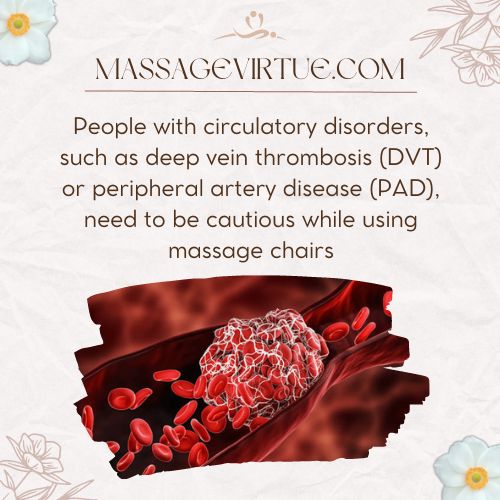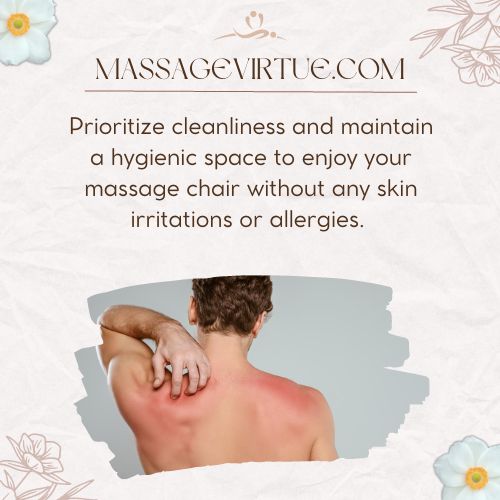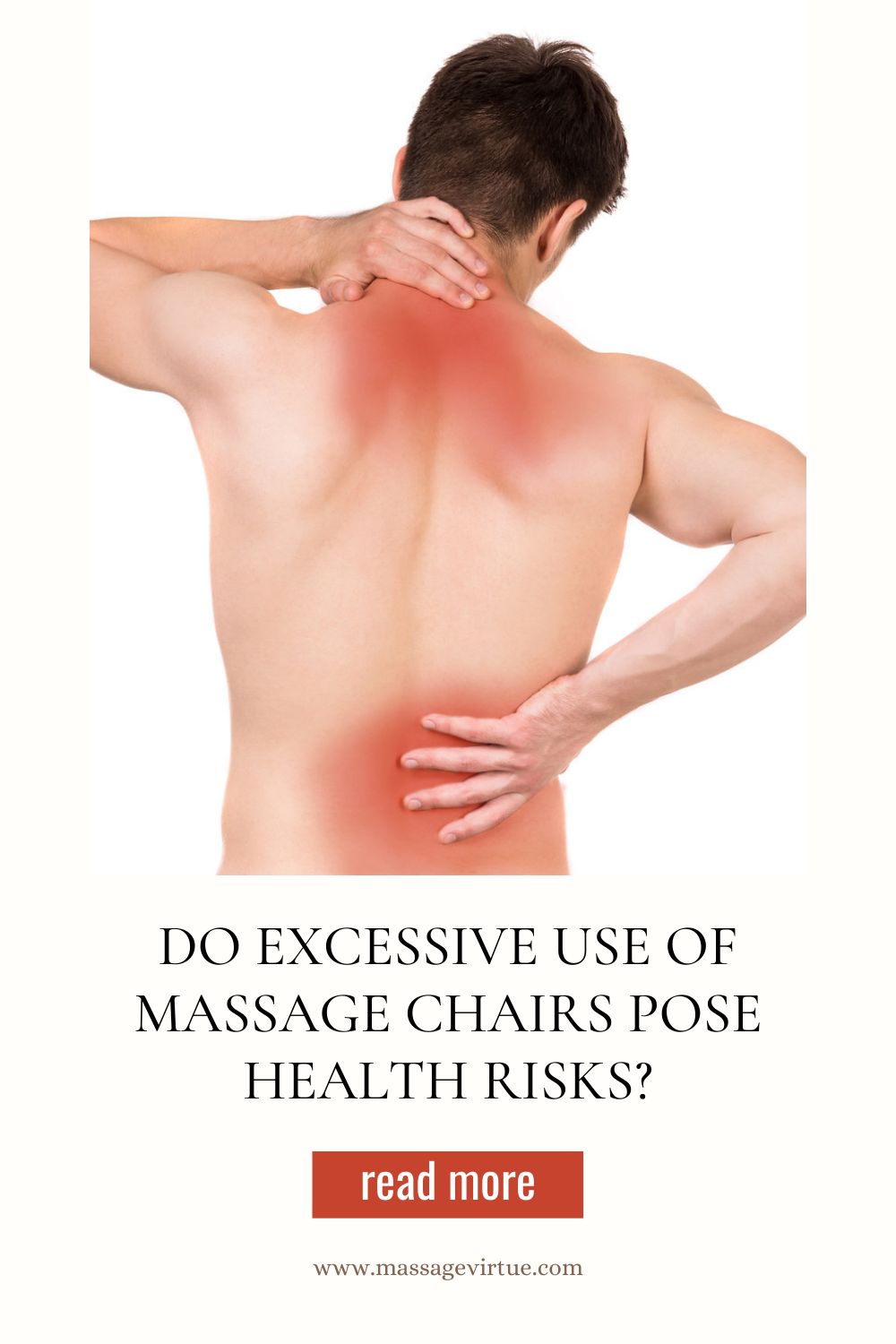Did you know that the luxury of a massage chair comes with certain health considerations? It’s essential to stay informed about potential risks to ensure your well-being and maximize the benefits.
By understanding these risks, you can make informed decisions and ensure a safe and beneficial experience.
In this comprehensive guide, we will explore the possible side effects, individuals at higher risk, and reasons behind these side effects, and provide valuable recommendations for using a massage chair safely.
People Prone to Massage Chair Health Risks
Massage chairs may pose risks to certain individuals, including:
1. Individuals With Medical Conditions:
Individuals with specific medical conditions, such as cardiovascular issues, diabetes, or chronic illnesses, should consult their healthcare provider before using a massage chair.
The vibrations and pressure exerted by the chair can impact these conditions and potentially worsen symptoms.
2 People With Circulatory Disorders:
People with circulatory disorders, such as deep vein thrombosis (DVT) or peripheral artery disease (PAD), need to be cautious.
The compression and intense pressure from the chair’s rollers can hinder blood flow and exacerbate these conditions.

3. People With Skin Sensitivities or Allergies:
Individuals with sensitive skin or allergies should take precautions before using a massage chair.
Certain materials such as synthetic fabrics, low-quality foam, adhesives, or lotions used in the chair may cause skin irritations or allergic reactions.
4. Children:
Children should not use massage chairs unsupervised. The intense pressure and movements are designed for adult bodies and may pose risks to children’s developing muscles and bones.
5. Pregnant Women:
Pregnant women should exercise caution when using massage chairs. The intense pressure and heat from the chair’s features may potentially stimulate contractions or affect blood flow to the uterus which causes urine contractions, discomfort or pain, and some other safety concerns.
6. People With Nerve or Spinal Cord Injuries:
Individuals with nerve or spinal cord injuries should seek medical advice before using a massage chair.
The intense pressure and movement may potentially agitate or further damage affected areas.
8 Possible Side Effects of Using Massage Chairs
Using massage chairs can potentially lead to various side effects. Some possible side effects include:
1. Excessive Muscle Pain, Soreness, and Fatigue:
The intensity of a massage chair’s movements and pressure may cause excessive muscle soreness, pain, or fatigue.
Users should adjust the settings and duration of their sessions to avoid overstimulation and strain.
2. Bruises and Muscle Injuries:
If the intensity or pressure of a massage chair is too high, it may cause bruising or muscle injuries.
Users should start with gentle settings and gradually increase the intensity, ensuring they do not exceed their comfort level.
3. Back Pain and Complications:
Individuals with pre-existing back conditions, such as herniated discs or spinal issues, should be cautious when using a massage chair.
The movements and pressure applied to the back may aggravate these conditions and lead to increased pain or discomfort.
4. Health Hazards for People With Low Blood Pressure:
Massage chairs that apply intense pressure or prolonged compression may cause a drop in blood pressure.
Individuals with low blood pressure should use caution when using a massage chair to avoid dizziness or fainting.
5. Irritations on the Contact Area:
People with sensitive skin or allergies may experience skin irritations or reactions when their skin comes into contact with the massage chair’s materials.
Ensuring cleanliness and using hypoallergenic materials can help mitigate these risks.

6. Specific Medical Conditions:
Certain medical conditions, such as osteoporosis, cancer, or blood clotting disorders, may increase the risk of adverse effects from using a massage chair.
Consulting with a healthcare professional is essential to determine whether it is safe to use a massage chair with these conditions.
7. The Potential Risk of Bone Fracture:
Excessive pressure or intense movements on fragile or weakened bones can potentially lead to fractures, particularly in individuals with conditions like osteoporosis or recent fractures.
8. Patients Undergoing Surgery:
Using a massage chair instead of seeking appropriate medical treatment when necessary can pose a massage chair health risks and may result in delayed diagnoses or treatment.
It is important to consult healthcare professionals to determine the best course of action for your specific condition.
Reasons for Side Effects
Understanding the reasons behind these side effects is crucial in preventing and mitigating their occurrence. Here are some common reasons:
| Reasons | Explanation |
| Wrong use and incorrect settings | Using a massage chair improperly, such as selecting settings that are too intense or using it for excessive durations, can increase the likelihood of experiencing side effects. |
| Pre-existing health conditions | Individuals with pre-existing health conditions, such as musculoskeletal disorders or cardiovascular issues, may be more susceptible to side effects from using a massage chair. |
| Overuse or excessive pressure | Overusing a massage chair or applying excessive pressure can lead to muscle strain, soreness, or other complications. |
11 Recommendations for Using a Massage Chair Safely
To ensure a safe and enjoyable experience with a massage chair, consider the following recommendations:
1. User Manual Importance:
Thoroughly read the user manual provided by the manufacturer and familiarize yourself with the chair’s features, recommended settings, and safety guidelines.
2. Healthcare Provider Consultation:
Seek advice from your healthcare provider if you have pre-existing medical conditions, are pregnant, or have concerns about using a massage chair.
Obtain personalized advice based on your specific health needs.
3. Adjusting Settings:
Customize the massage chair’s settings to a level that feels comfortable and enjoyable for you. Avoid settings that cause discomfort or pain.
4. Limiting Session Duration:
Adhere to the manufacturer’s recommended duration for massage chair sessions. Longer sessions may increase the risk of muscle soreness or other side effects.
5. Maintaining a Proper Posture:
Sit with your back against the chair’s backrest to ensure good posture and maintain proper alignment of your spine throughout the session.
6. Staying Hydrated:
Drink an adequate amount of water before and after using a massage chair to support the body’s healing processes and prevent dehydration.
7. Avoiding Overuse:
Resist the temptation to excessively use the massage chair and allow your body time to rest and recover between sessions.
8. Attention to Discomfort:
Listen to your body and be aware of any discomfort or pain during a massage chair session.
If you experience unusual or persistent discomfort, discontinue use and seek professional advice if needed.
9. Supervising Children:
Always supervise children when they use a massage chair. Children may not be able to assess their comfort levels or understand potential risks, so adult supervision is crucial.
10. Maintaining Cleanliness:
Regularly clean and maintain your massage chair to ensure hygiene. Follow the manufacturer’s cleaning instructions and avoid using harsh or abrasive cleaning agents.
11. Importance of Properly Fitted Chairs:
Ensure that the massage chair you use is properly fitted to your body size and proportions. Fitting chairs may lead to discomfort, improper alignment, or increased injury risks.
Conclusion
Massage chairs provide a convenient and enjoyable way to experience relaxation and alleviate muscle tension.
However, it is essential to be aware of potential health risks and take appropriate precautions for safe usage.
By understanding the possible side effects, considering individual risk factors, and following the recommended safety guidelines, individuals can maximize the benefits of a massage chair while minimizing any potential adverse effects.
Prioritize your well-being and enjoy the soothing benefits of a massage chair while being aware of potential massage chair health risks.
FAQs
Q: Who Shouldn’t Use a Massage Chair?
Some individuals, such as those with recent injuries/surgeries, blood clotting disorders, certain medical conditions, or during pregnancy, should exercise caution or avoid using a massage chair. Consulting with a healthcare provider is crucial to ensure safety and suitability based on individual circumstances.
Q: Are There Any Side Effects of Massage Chairs?
Yes, using a massage chair can have side effects such as muscle soreness, bruising, discomfort, or exacerbation of certain medical conditions. Proper usage, following manufacturer guidelines, and consulting with a healthcare professional are important to address any concerns or pre-existing health conditions.
Q: Are Massage Chairs Safe to Use?
Yes, massage chairs are generally safe to use when used properly and following the manufacturer’s guidelines. However, individuals with specific medical conditions or recent injuries should exercise caution and consult with a healthcare professional before use.


